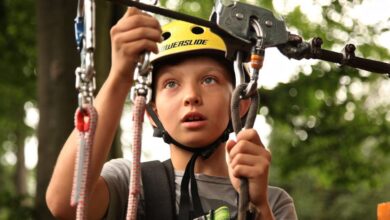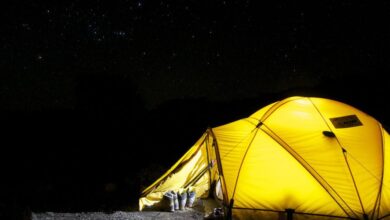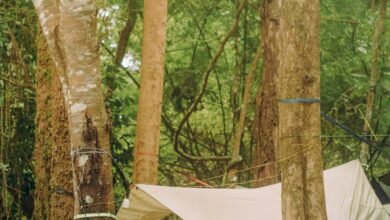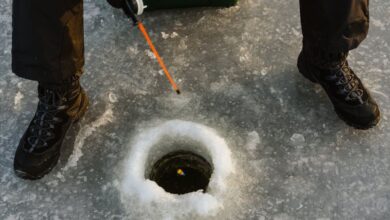How Do I Prepare for a Winter Camping Adventure in the Rockies
Winter camping in the Rockies is a thrilling experience that offers breathtaking landscapes and solitude far from the hustle and bustle of everyday life. However, it also presents unique challenges that require careful planning and preparation. Whether you’re an experienced mountaineer or a novice adventurer, understanding how to gear up for this icy escapade is crucial to ensuring safety and enjoyment.
Gear Up for the Cold
The right equipment is essential for a successful winter camping trip. Start with a four-season tent designed to withstand heavy snow and strong winds. Look for one with a sturdy frame and a rainfly for added protection against moisture. Inside your tent, invest in a high-quality sleeping bag rated for sub-zero temperatures. Pair it with an insulated sleeping pad to provide an extra layer of warmth and comfort.
Dressing appropriately is equally important. Layering is key in winter conditions—begin with moisture-wicking base layers, add insulating mid-layers, and finish with a waterproof and windproof outer shell. Don’t forget accessories like insulated gloves, a warm hat, and thick socks. Proper footwear is vital as well; waterproof boots with good traction will keep your feet dry and secure while navigating snowy terrain.
Plan Your Route Wisely
Before embarking on your winter camping adventure, take time to research and map out your route. The Rockies offer numerous trails, but winter conditions can change quickly, making some routes unsafe. Check weather forecasts and current trail conditions through local ranger stations or online resources. Opt for established paths that are well-marked and have a history of being safe for winter camping.
Consider the duration of your trip and the distance you can cover each day. Shorter daylight hours in winter mean you’ll need to plan your hikes accordingly. Set up camp well before sunset to avoid rushed decisions and ensure you have enough daylight to pitch your tent safely.
Stay Hydrated and Nourished
Cold weather can mask your body’s signals for hydration, leading to potential dehydration. Carry insulated water bottles or hydration bladders that prevent freezing. It’s wise to bring a portable stove for melting snow or boiling water. When it comes to food, focus on high-calorie, easy-to-cook meals that provide sustained energy. Freeze-dried meals and energy bars are excellent options that are lightweight and simple to prepare.
Take breaks to eat and drink regularly, even if you don’t feel thirsty or hungry. This will help maintain your energy levels and keep you warm, as the body requires more fuel to generate heat in cold conditions.
Master Winter Survival Skills
Before you set off, brush up on winter survival skills. Knowing how to build a snow shelter, such as a quinzee or igloo, can be life-saving if you become stranded. Familiarize yourself with navigation techniques using a map and compass, as GPS devices may fail in extreme weather.
Additionally, learn how to recognize signs of hypothermia and frostbite. Being able to identify these conditions early can be crucial. Carry a first aid kit stocked with items suitable for winter injuries and familiarize yourself with basic first aid procedures.
Embrace the Experience
While preparation is key, don’t forget to embrace the beauty and tranquility that winter camping offers. The Rockies in winter are a serene wonderland, with snow-covered peaks and quiet forests. Take time to pause and appreciate your surroundings. Capture the magic with photography or simply enjoy the stillness that comes with the season.
Engage with fellow campers or locals to learn about their experiences and tips for winter camping. Sharing stories can enhance your adventure and provide valuable insights that you may not find in guides.
Final Thoughts on Your Adventure
As you gear up for your winter camping adventure in the Rockies, remember that preparation is your best ally. The thrill of exploring winter landscapes is unmatched, but it requires respect for the elements and careful planning. By securing the right gear, planning your route, staying nourished, mastering survival skills, and embracing the experience, you can create unforgettable memories in this pristine wilderness. Happy camping!







